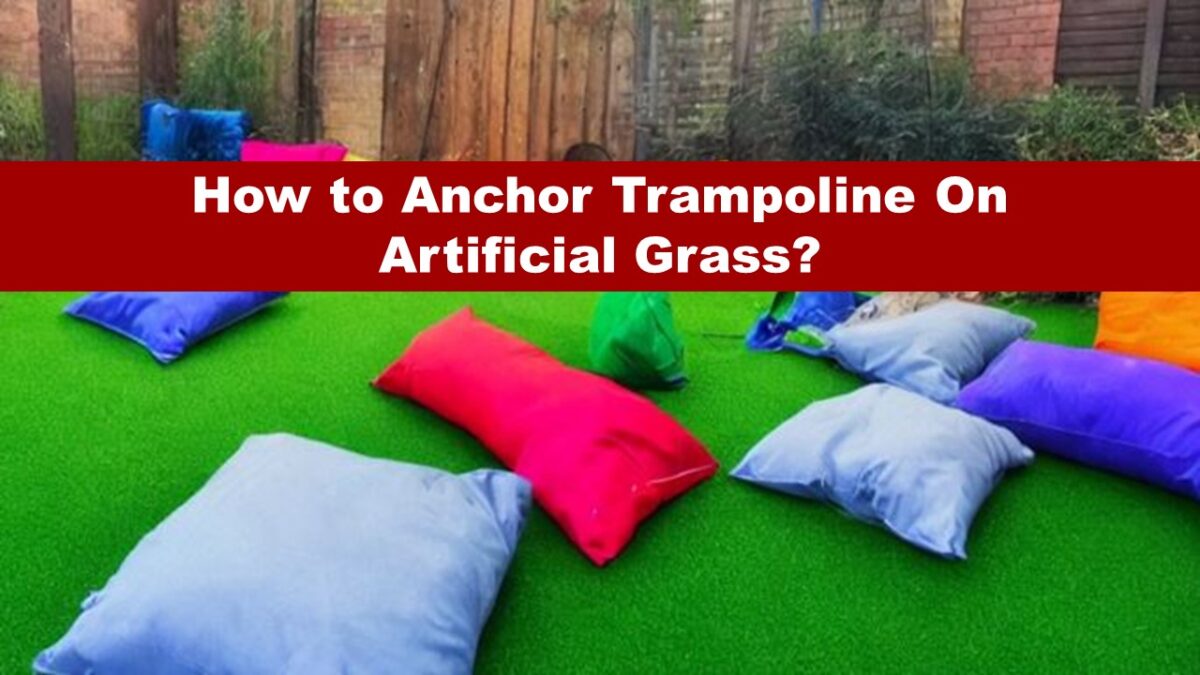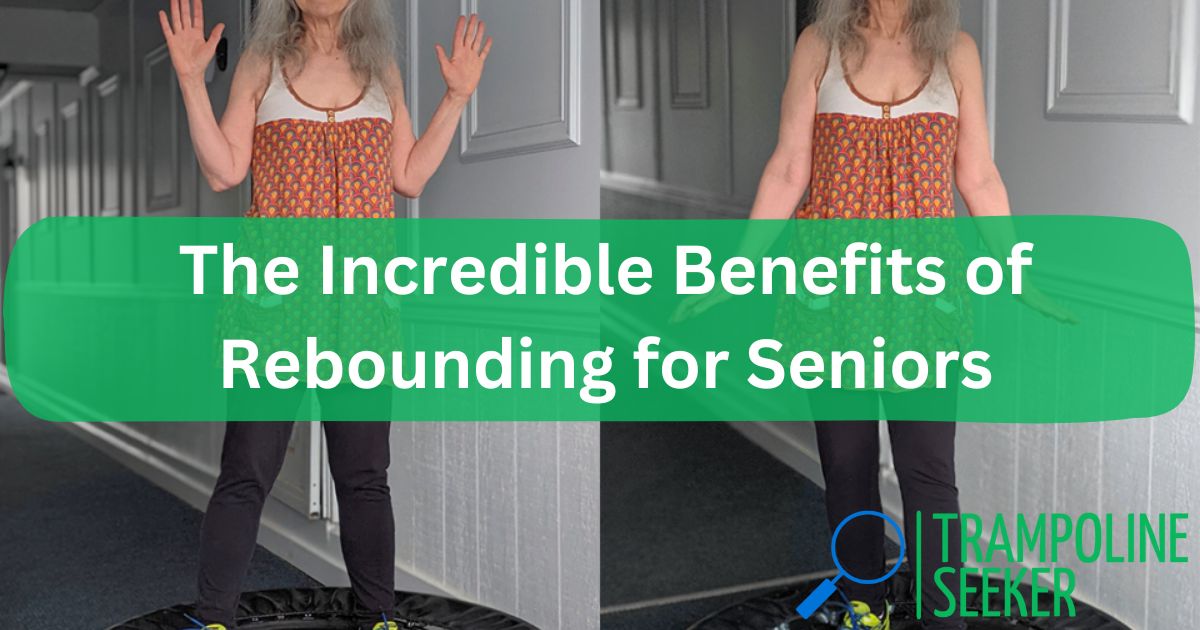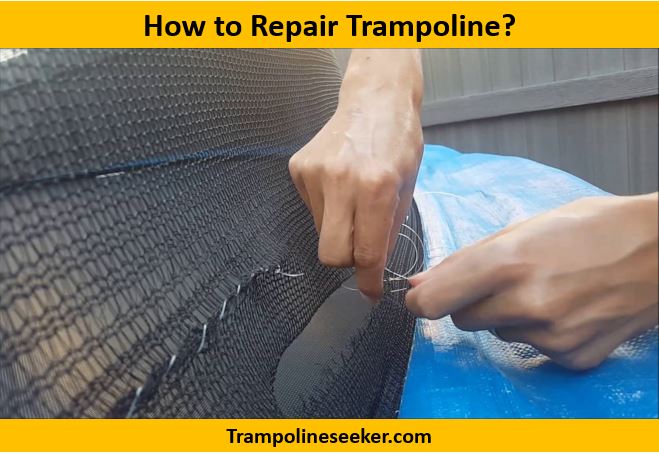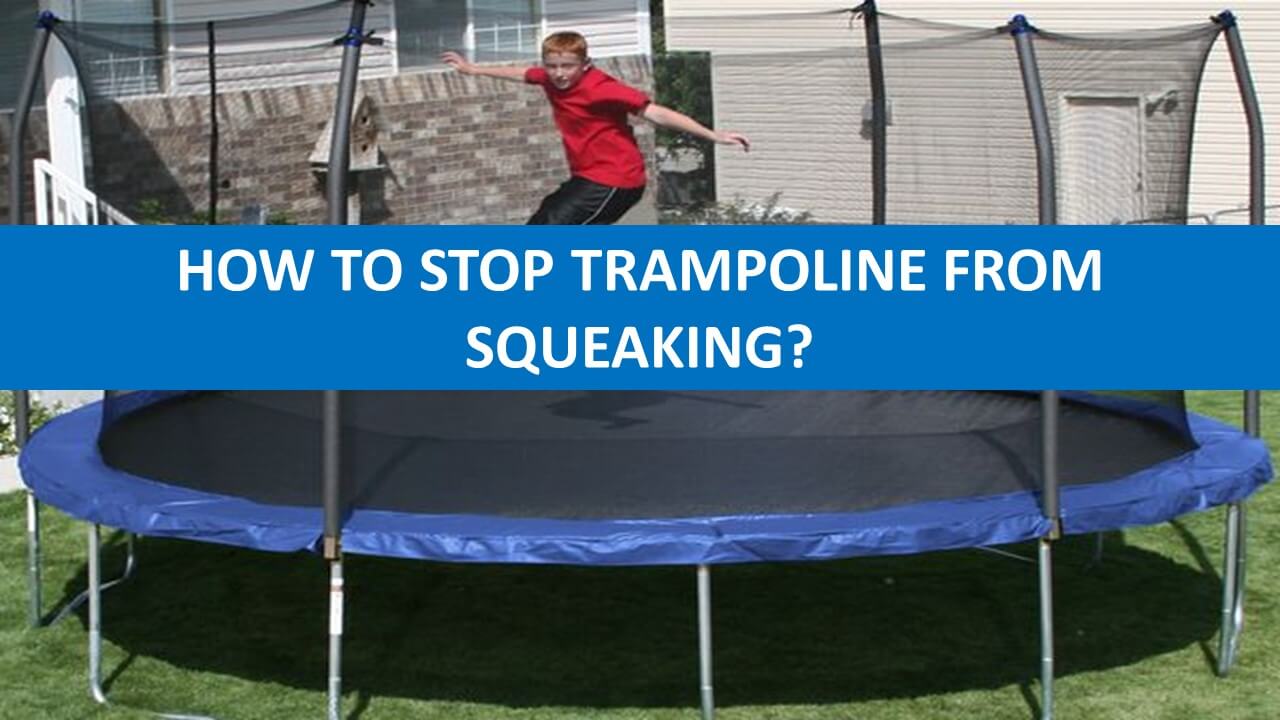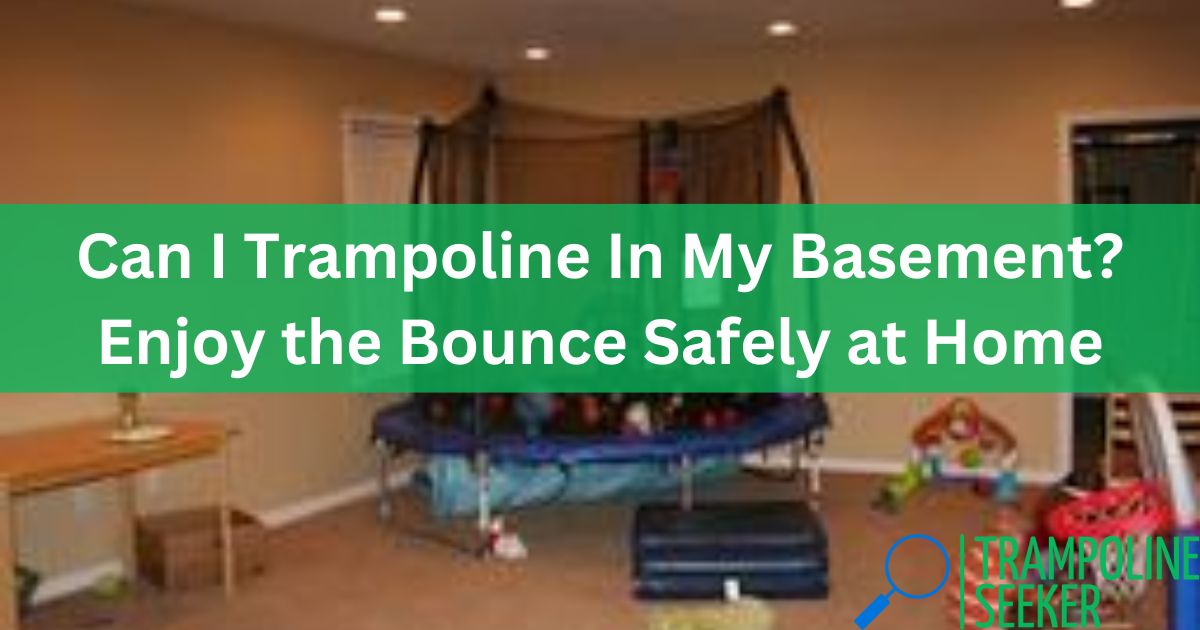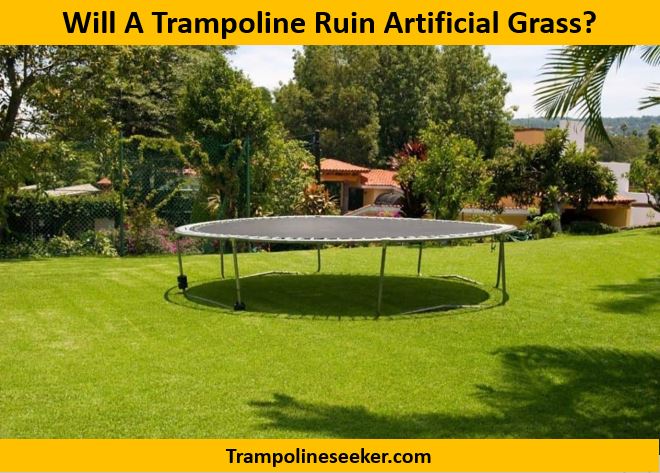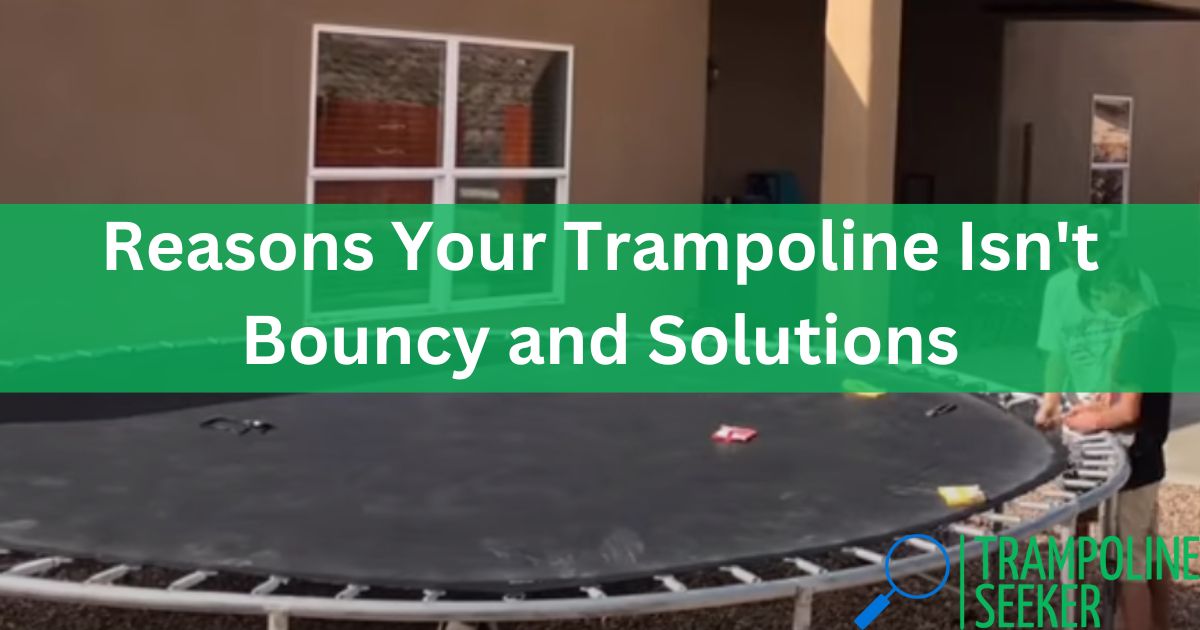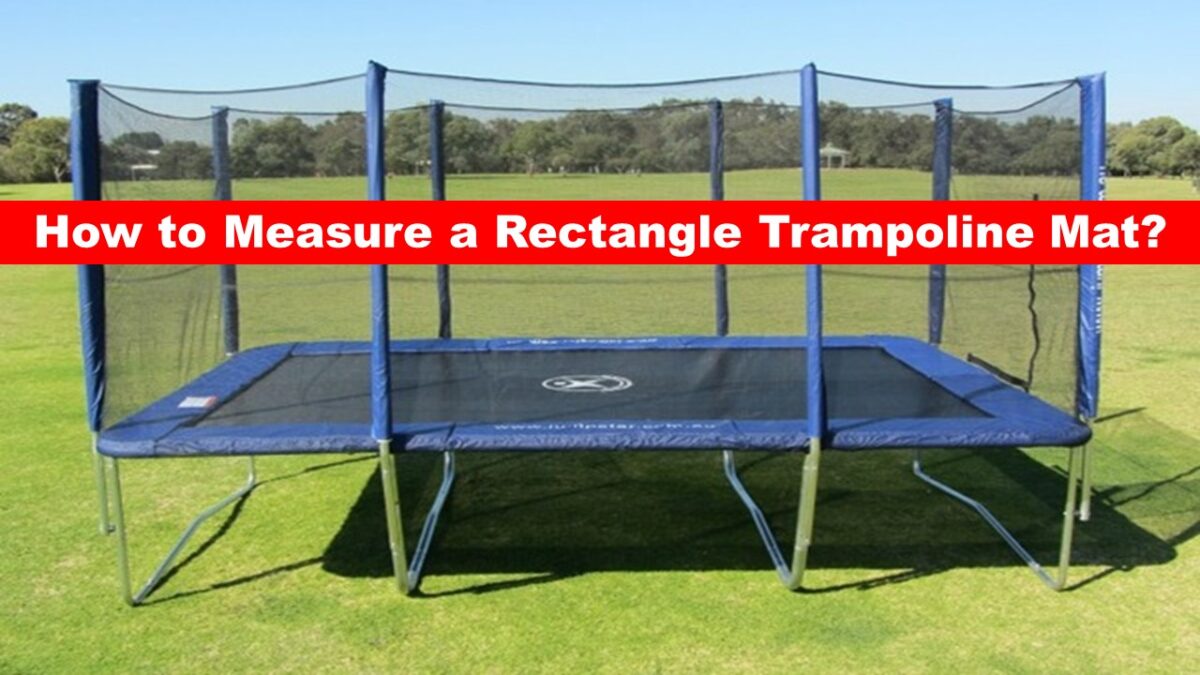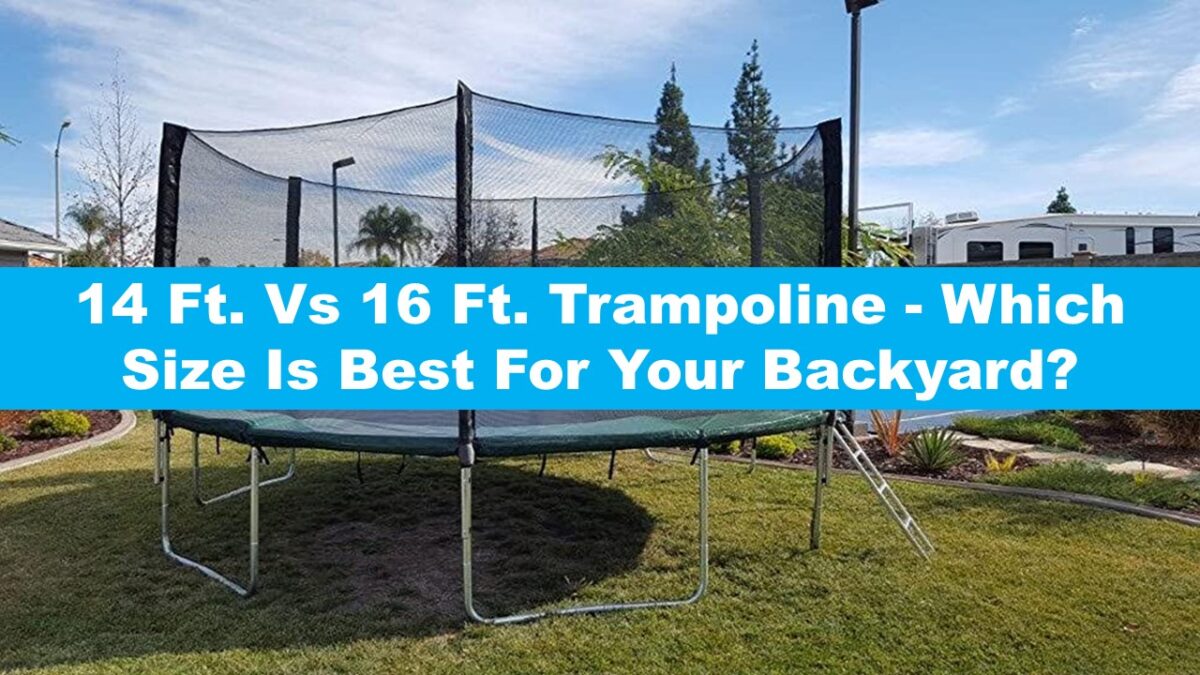Trampolines should be placed on a level and firm ground with enough clearance for the trampoline to be safe to jump from. Ideally, you should have bark or a firm grass surface rather than concrete or tarmac.
If the ground is not level, the jumper will bounce down the slope and back up again. I don’t recommend putting it next to a fence or a pool.
The best place to put your trampoline is the place that will give you the greatest amount of fun and the highest level of safety, allowing you to have an unforgettable backyard adventure.
The best thing you can do for your kids is to let them spend hours outside entertaining themselves if they are old enough. You’re trying to get them off-screen and into the play world. Here is a guide to helping you figure out where to put trampoline in backyard so we can get you started on the right track.
Where to Put Trampoline in Yard
Trampoline Should Have Enough Space Around It
Once you’ve decided what shape and size of trampoline you’re going to have, you will have to make sure you have an area around 3ft bigger on each side than the trampoline will be once it’s delivered.
You will need at least 18 feet of clearance in your yard if you want to install a 12ft round trampoline. The measurements are 3 feet on one side of the trampoline plus 12 feet on the other side of the trampoline.
There is usually a little give in the enclosure net of most trampolines. To prevent branches and shrubs from growing too close to the netting, ensure you have enough clearance at the sides of the structure. A twig at eye level is the last thing you want to deal with.
The Trampoline Should Have Enough Space Above It
Rather than being seen as a guideline, this should be viewed more as a commandment. A trampoline should have a clearance of at least 24 feet above the ground.
A teenager enthusiastic about the sport will almost certainly be interested in trying tricks and going as high as they can if you happen to have one wandering by. The fact that a beginner teen can reach 16 feet is quite reasonable.
Maintaining your trampoline will also be easier if you avoid the branches above. During the fall, it will be easier to keep the trampoline clean.
A trampoline can be painful to clean off wet, decaying leaves. Furthermore, you won’t have to worry about squirrels messing up the trampoline mat.
The Ground Should Be Level
This is a critical point to remember when jumping on the trampoline since you want to ensure that the kids stay in the center when they jump on it. On a slope, the way that the mat goes down and then back up again, in effect, will try to bounce them down the slope.
When you have a level piece of ground and a little space, you can create a terraced area even if you don’t have much space. Eventually, you’ll be left with a flat area cut into the hillside and a small wall reinforcing it.
To ensure that your children have safe access to the ladder, you should ensure that the area around the trampoline is included in your terrace to prevent shrubs from growing into the jump area of the trampoline, as this could lead to injuries.
The Ground Should Be Even
Regardless of whether the ground is level, you need to ensure that rocks or roots do not obstruct the legs of the trampoline. You want every bounce to be solid.
The trampoline might move within the yard if the ground is uneven, so with every bounce, it may seem to “walk” itself across the yard. There is a good chance it will end up in a place you would prefer it not to.
The Ground Should Be Firm
An impact-absorbing surface is what you are looking for. Grass growing over firm soil (not swampy), rubber matting, or even bark can be considered examples of this.
There should be a small amount of giving in the ground, but not too much that it lowers the stability of the ground. The trampoline should not be placed on concrete or tarmac because they are both hard surfaces.
When a trampoline is jumped on a very hard surface such as concrete, the impact of every bounce reverberates through the trampoline and not the ground, damaging the trampoline frame and legs.
Place The Trampoline Away from Swimming Pools
Swimming pools and trampolines should not be located next to each other in the same area. It is recommended that they should not even be close enough to the swimming pool so that they can easily be dragged there. There is not a good idea to jump from a trampoline into a pool.
I don’t think jumping over a pool fence is a good idea, even if the kids can get enough bounce clearance. You can do this even if your pool is very deep. There is a minimal amount of flooring that surrounds the pool. Do not be persuaded by the kids that it would be a great idea.
Summary
With the following 6 Rules for Ideal Trampoline Placement in the Yard, you can set your kids up for many hours of trampoline fun when you follow them. This article, I hope, has helped you decide where you would like to put your trampoline and I hope you find it helpful.
Related:



